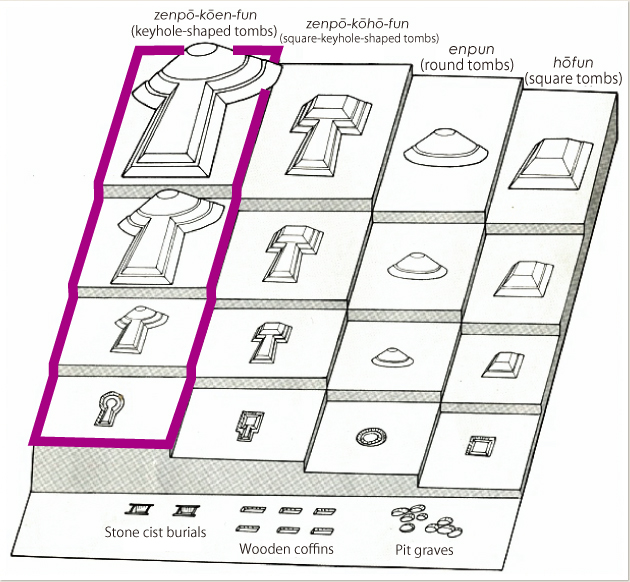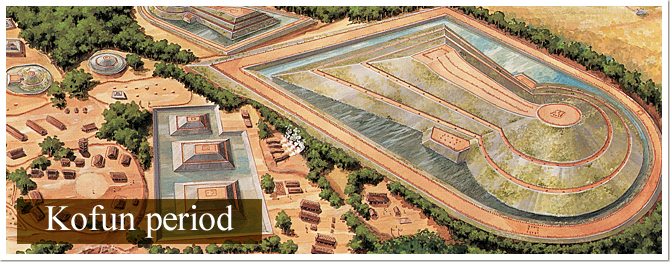About kofun -Scale and order-
For the almost 400 years between the late 3rd century and the 7th century, influential figures across the Japanese archipelago poured enormous energy into the construction of their tombs, known as kofun. These tumuli varied greatly in both size and shape.
There are four main types of kofun: zenpō-kōen-fun (keyhole-shaped tombs), zenpō-kōhō-fun (square-keyhole-shaped tombs), enpun (round tombs), and hōfun (square tombs). Comparing the sizes of the largest examples of each type, zenpō-kōen-fun are the largest, followed by zenpō-kōhō-fun, enpun, and hōfun.

Kofun hierarchy (original illustration by Prof. Tsude Hiroshi)
Professor Tsude Hiroshi took notice of the differences in size among the four, and argued that the form of burial mound represented the lineage and status of the person who was buried, with size indicating power. He hypothesized that local influential figures across the Japanese archipelago were ranked according to the dual principles of form and size of kofun, and called his theory the "zenpō-kōen-fun system."
Excavations by the Japanese History Laboratory of Osaka University and Fujiidera City Board of Education confirmed that Nonaka Kofun is a small hōfun measuring 37 meters a side.





